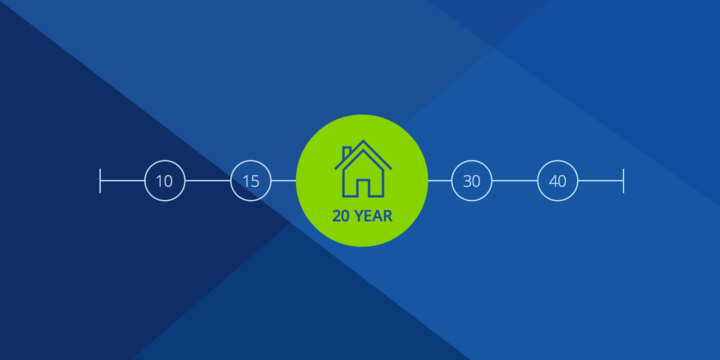What Is a Mortgage Loan Origination Fee?
A loan origination fee is not a single fee, but actually a set of lender-specific fees that are part of your costs when closing a mortgage loan. Here's a closer look.


Written by Alycia Lucio on March 21, 2025
Reviewed by Neil Swanson, Edited by Jessica Rapp
A mortgage loan origination fee covers the administrative costs of creating a mortgage loan. Lenders charge origination fees for necessary tasks when servicing a loan, such as verifying documents, underwriting the loan, and processing the loan. Fees differ from one lender to another, and some lenders don’t charge loan origination fees at all. A lender may charge a higher interest rate in exchange for no origination fees, or repackage the loan origination fees as processing or funding fees.
Be sure to ask your lender about all costs related to creating and processing a mortgage beforehand. We’ll help you understand loan origination fees, including the line items included, prices ranges, and payment strategies, to help you prepare for the conversation with a lender and better understand the true cost of a mortgage.
What is a loan origination fee?
A loan origination fee isn’t a single fee, but rather a set of fees that compensate the lender for administering and processing the loan. Loan origination fees often include the following line items:
Appraisal fees: The cost of appraising the property being financed.
Credit report fees: The cost of pulling a borrower’s credit score.
Application processing fees: The cost of verifying a borrower’s financial documents, such as pay stubs, bank statements, and credit history.
Underwriting services: The cost of evaluating a borrower's risk profile for a loan, which includes confirming their job status and the property's value.
Document preparation: The cost of creating legal and financial documents, such as loan estimates, promissory notes, and closing disclosures.
Administrative fees: The cost of completing loan processing, tasks such as title searches, compliance reviews, and communicating with the borrower throughout the loan application process.
How much are loan origination fees?
A loan origination fee typically costs between 0.5% and 1% of the total loan amount. For example, if you were to get approved for a $450,000 mortgage loan, the lender might charge you $2,250 to $4,500 in loan origination fees. According to a 2024 Zillow survey, the most common unexpected fee among homebuyers was a loan origination fee (66%).
When do you pay loan origination fees?
Mortgage loan origination fees are usually paid at closing as part of the closing costs. You’ll find your loan origination fees outlined in the Closing Disclosure, which borrowers receive at least three days before closing. Your loan origination fees will also be included in your Loan Estimate, which you receive within three business days after submitting a mortgage loan application.
How to pay for loan origination fees
Paying loan origination fees can be challenging, especially if you have a large mortgage loan. Fortunately, borrowers can pay for loan origination fees in a few different ways.
Upfront payment
If you have enough cash on hand, you can pay all loan origination fees upfront. Borrowers can write a check or schedule a wire transfer at closing to cover the cost.
Rolling fees into your mortgage
Another common approach is to roll origination fees into your mortgage. This allows you to spread the cost of origination fees over the life of your loan and avoid paying them upfront. However, rolling loan origination fees into your mortgage increases the principal amount borrowed, which naturally increases your monthly mortgage payments.
Seller concessions
Some sellers might agree to cover a borrower’s loan origination fees in exchange for a quick closing. This type of incentive is known as a seller concession. However, borrowers should know that seller concessions are less common in competitive markets where sellers hold most of the bargaining power.
Lender credits
Some lenders offer lender credits as a financing option. Lender credits allow borrowers to forgo upfront costs, such as loan origination fees, in exchange for a higher interest rate on their loan. Similar to rolling fees into your mortgage, using lender credits will increase your monthly mortgage payment. However, lender credits increase the interest rate, not the principal amount borrowed. This might significantly increase the cost of borrowing in the long-run.
Assistance programs
Borrowers can also explore homebuyer assistance programs offered at the federal, state, and local levels. These programs often provide financial assistance for out-of-pocket costs, such as origination fees, closing costs, and down payments. Each program has their own eligibility criteria and is usually based on the borrower’s financial profile and property location. Financial aid can come as a low-cost loan, forgivable loan, or outright grant.
How do loan origination fees work for different types of loans?
Loan origination fees differ from one loan to another. Some loans limit how much lenders can charge for loan origination, while other loans have no origination fees at all.
Conventional loans
Loan origination fees for conventional loans are charged by lenders as a percentage of the total loan amount. Borrowers can expect to pay 0.5% to 1% in loan origination fees at closing as part of their overall closing costs.
VA loans
Loan origination fees for VA loans are capped at 1% of the total loan amount, regardless of the lender’s costs. However, VA loans come with separate funding fees that range from 0.5% to 3.6% of the total loan amount, which could increase the overall cost of borrowing. Funding fees are based on the borrower’s down payment amount, service status, and whether it’s the borrower’s first VA loan.
USDA loans
Loan origination fees on USDA loans range from 0% to 1%. Since USDA loans are reserved for low-to-moderate income borrowers in rural areas, lenders might be more lenient with lender fees. However, USDA loans come with an upfront guarantee fee, which is 1% of the loan, and an annual fee of 0.35% of the loan balance. Similar to origination fees, these fees can be rolled into the mortgage.
FHA loans
Loan origination fees for FHA loans are usually 0.5% to 1% of the loan amount, although some lenders charge a flat fee, instead. However, since FHA borrowers pay smaller down payments, they need to pay mortgage insurance premiums, which are 1.75% of the total loan amount. Fortunately, this cost can be rolled into the mortgage loan.
Final thoughts on mortgage loan origination fees
Some lenders advertise mortgage loans with no origination fees to attract new borrowers. However, borrowers should know that the tradeoff is often a higher interest rate on your loan, which increases the overall cost of borrowing. Other lenders might repackage loan origination fees as processing or funding fees, which cover the same costs as loan origination fees. Be sure to ask your lender about all costs related to creating and processing a mortgage loan. Our loan officers at Zillow Home Loans* are available to answer all your financing questions.
*An equal housing lender. NMLS #10287
How much home can you afford?
At Zillow Home Loans, we can pre-qualify you in as little as 5 minutes, with no impact to your credit score.
Zillow Home Loans, NMLS # 10287. Equal Housing Lender
Get pre-qualifiedHow much home can you afford?
See what's in reach with low down payment options, no hidden fees and step-by-step guidance from us at
Zillow Home Loans.
Zillow Home Loans, NMLS # 10287. Equal Housing Lender
Calculate your BuyAbility℠



